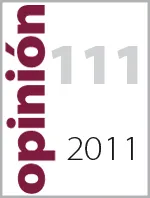Mass Uprisings in the Arab World: Next Stop Central Asia?

Nicolás de Pedro,
Researcher CIDOB
24 March 2011 / Opinión CIDOB, n.º 111
The expanding nature of the revolts on the southern shores of the Mediterranean has prompted journalists to ask area specialists whether something similar might occur in Central Asia. The only honest response would be to admit that nobody can know. In-depth analysis might describe the factors leading to a potentially explosive situation but it would be difficult to venture, in any unequivocal way, when and how such an explosion might take place. Thanks to their corrupt, authoritarian bent, the long-lived regimes of what was once Soviet Central Asia feature prominently in the betting on coming scenarios. However, causal relations in social phenomena don’t work according to mathematical logic. Indeed, the case may even arise of a prediction being correct while the evaluation of the causes and sequence of events is wrong. At the end of the 1970s, for example, the eminent French historian Hélène Carrère d’Encausse predicted the collapse of the USSR, but she attributed it to the demographic dynamism of the Soviet Central Asian Republics, assuming that this would sooner or later lead to inevitable uprisings against Moscow. As we know, the USSR did disappear in 1991, but not remotely for this reason.
From this prudent standpoint, one might say that structural conditions and actors are in place so that similar revolts could take place in Central Asia. Of course, the dates are propitious. On 21 March, a good part of Eurasia celebrated Nowruz (New Light), the Persian New Year, which marks the onset of spring, traditionally a period of fervent mass-based activity in Central Asia. The seasonal thaw driving back the snow facilitates mobilisations in cities and towns as well as the movements and incursions of insurgent groups that swarm in the Fergana, Rasht and Tavildara valleys.
As in Tunisia, Egypt and Libya, in the Central Asian republics, apart from the uncertain Kirghiz situation, state structure and power revolve in their entirety around the figure of the president and his network of clients. Succession, moreover, is a taboo subject, despite the urgent need to establish institutional mechanisms and channels to ensure that transfers of power will not be traumatic. Hitherto, the changes that have taken place at the head of the republics have only been possible as a result of a civil war (Tajikistan), two mass uprisings, one of them bloody (Kirghizstan), and the death of a president (Turkmenistan). In the five countries, corruption is endemic, spreading into all strata and sectors. Except in the case of Kazakhstan, the only prospects of making a living for most of the youthful population of Central Asia lie in emigration, in particular taking up unskilled jobs in Russia. Hence, there do exist in Central Asia the necessary ingredients – absence of institutional legitimacy, lack of life-planning horizons and the disaffected mood of the populations – that might incite some kind of similar revolt.
Media perseverance in trying to identify the next scenario is generating apprehension among the Central Asian regimes. Again, they immediately tend to see the spreading shadow of the West in any mass protest and fear a new series of “colour revolutions”. The Uzbek government is therefore exercising implacable control over news being broadcast in the country about the revolts in the Arab world and is even, according to some Russian sources, monitoring the flow of text messages and also envisaging an eventual suspension of the mobile phone network. In Kazakhstan, a much less likely setting for upheaval than its Uzbek neighbour in spite of the coming presidential elections, the president is personally warning the citizens about the catastrophic consequences that any insurgency of this type might have for the good economic functioning of the country. In Kirghizstan, after a harsh and especially calamitous winter, the most recent news from the south of the country is worrying and suggests a possible renewed outbreak of the interethnic violence that caused hundreds of deaths in June 2010. Nonetheless, the volatility of the situation in Kirghizstan is mounting independently of events in North Africa. In Tajikistan, generalised disgruntlement over rising food prices and the inefficiency and corruption of the presidential clique is also increasing. Yet it is probable that the memory of the civil war, prodded by the Government’s counterinsurgency operations during the last year and a half, will keep weighing heavy on the spirit of the population. Finally, Turkmenistan, ironically known among specialists as the North Korea of Central Asia, remains the region’s big unknown factor.
There can be no doubt, then, that reasons exist, and actors too but, as happened in the Arab countries before the revolts, the strength of the former and the capacities of the latter are yet to be discovered. The formation and linking up of protest groups through social networks, and news broadcasts from channels like Al Jazeera have been crucial in the Arab world. Cultural and media products from the Arab countries have some resonance in Central Asia but little political or sociological clout. Access to social networks is relatively extended in the region but, even in the Kirghiz case, their capacity as an instrument of political action and mobilisation remains to be seen. Again, civic opposition groups and active Islamic organisations do exist. However, none of this means that protests will necessarily occur. The risks involved and the difficulties faced by the leaders would be enormous, quite apart from the fears instilled into a Central Asian population submitted since the end of the eighties to warnings, emanating from the circles of power, of the unavoidable menace of armed conflict should there be any attempt at protest or sign of instability. The fact remains that recent precedents such as the Andijan crisis of May 2005 or the Bishkek protests in April 2010 compel one not to discount any scenario in the apparently stable yet foreseeably conflictive Central Asian republics.
Nicolás de Pedro,
Researcher CIDOB